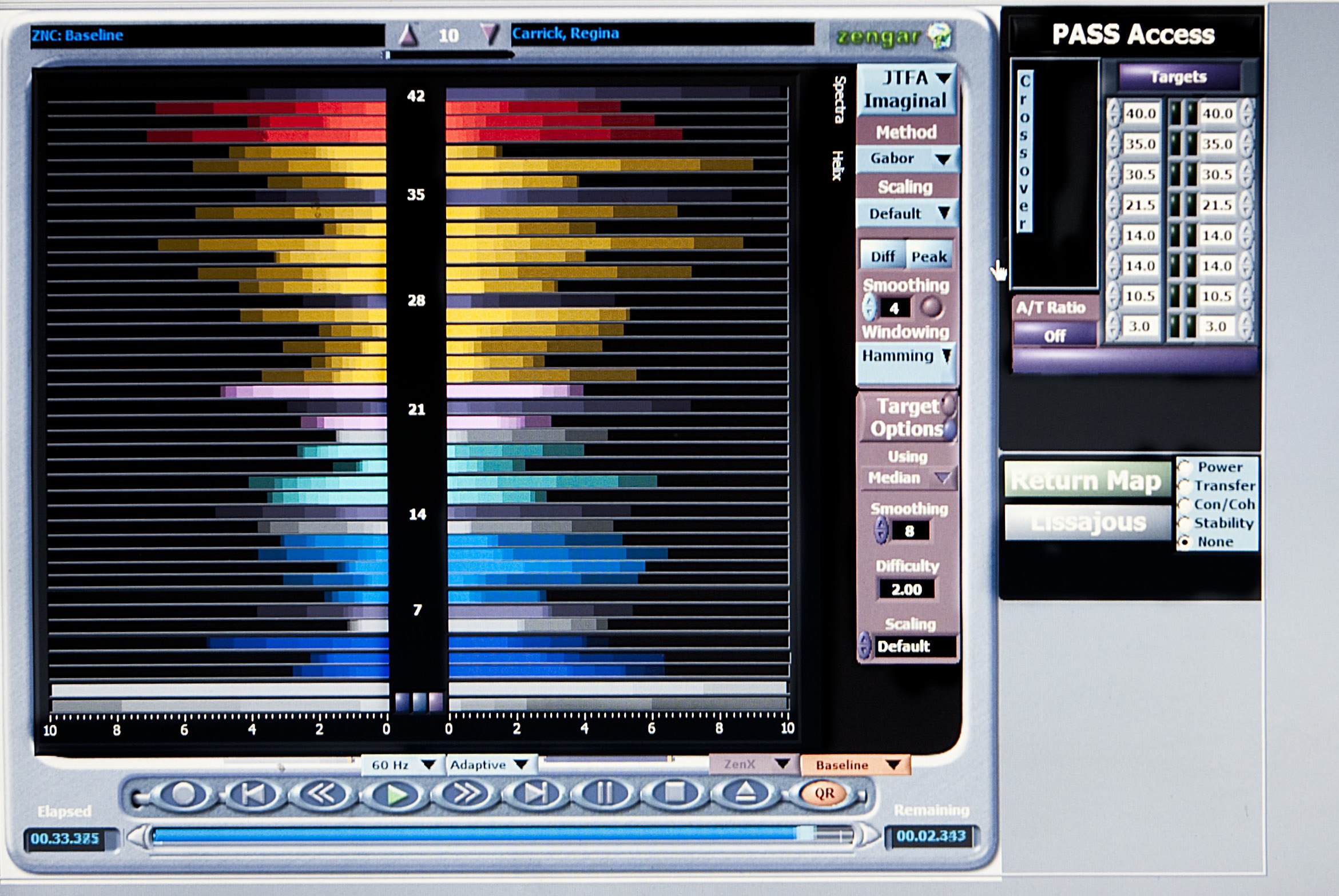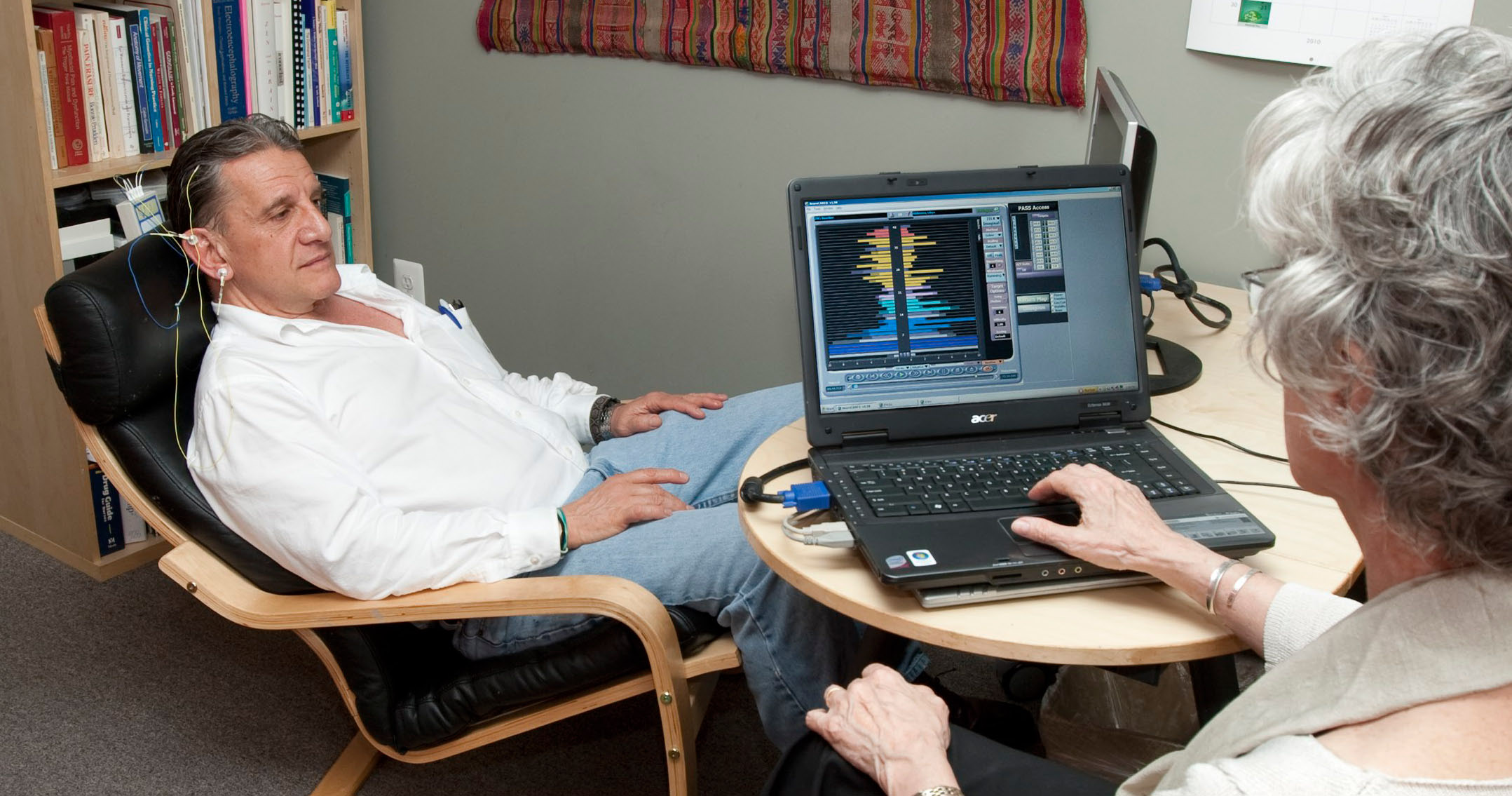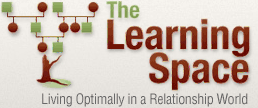Frequently Asked Questions
-
What is Neurofeedback?
Neurofeedback (or EEG biofeedback) is a process by which the brain learns more efficient patterns, allowing individuals to function more optimally. It is a non-invasive way to address a multitude of symptoms and teaches the brain to better self-regulate at a central nervous system level.

Screeen shot of the Zengar NeurOptimal neurofeedback training equipment we use.
It is the only opportunity the brain has to receive information about itself and to therefore correct inefficient patterns that have developed over time. Inefficient patterns can mean a person is stuck in high arousal states (difficulty calming down, over responsiveness to threat, difficulty falling asleep, difficulty focusing) or low arousal states (difficulty waking up, unmotivated, poor memory, and trouble focusing).There are brain wave patterns associated with unwanted symptoms, such as anxiety, depression, sleep disturbances, ADD/ADHD, migraines and long-term reactions to trauma to name a few. Through the training sessions, neurofeedback targets the electrical turbulence or activity that disturbs the central nervous system (CNS) and creates flexibility in the brain where more rigid patterns existed. Essentially, what neurofeedback does is bring the CNS back to the present, teaching the individual to be more in the moment and have more choices on how to respond.
-
What is the process?
Neurofeedback starts with putting sensors on the head. Nothing is going into the brain—it is simply measuring electrical activity already going on in the brain. Through auditory and visual feedback, the brain (or CNS) is alerted when there is too much variability (or turbulence) in a particular part of the brain.
 Using music of the client’s choice, there is a brief interruption in the sound alerting the CNS to an imbalance. Your brain automatically figures out that the turbulence is what causes the pauses and corrects the pattern to allow for fewer pauses. Over time, this exercise gets the brain in shape to better self-regulate thereby decreasing symptoms caused by the imbalance of electrical activity in the brain.
Using music of the client’s choice, there is a brief interruption in the sound alerting the CNS to an imbalance. Your brain automatically figures out that the turbulence is what causes the pauses and corrects the pattern to allow for fewer pauses. Over time, this exercise gets the brain in shape to better self-regulate thereby decreasing symptoms caused by the imbalance of electrical activity in the brain. -
What do I do during a typical neurofeedback session?
Neurofeedback is more about being than doing. Because the brain and the neurofeedback equipment are communicating with each other, it is the individual’s responsibility to relax and let the process unfold. Sessions can go in a few different directions depending on the client and consultant’s decision.
Following are examples of a few typical sessions:
- Once the training has begun, the client can proceed with eyes open and/or eyes closed. The consultant may lead the individual through deep breathing and relaxation exercises. The individual will spend the session in a quiet meditative state.
- Once the training has begun, the client and clinician are in constant verbal communication about whatever topic comes up. The brain is still receiving information about itself through the training even though the client may not have a conscious awareness to it.
-
How is neurofeedback incorporated into Bowen family systems consultation?
The neurofeedback reflects patterns in the individual brain that developed in the family of origin over the generations. When the anxiety is up in the family or an individual is in a vulnerable position in the family, the individual’s brain activity is less efficient. The neurofeedback supports individuals and family members in their effort to decrease their reactivity to the anxiety present and to become more productive individuals within the family or work setting.
The Learning Space Blog
view blog »Newsletter
Fill out the form below to subscribe to The Learning Space's quarterly newsletter, and get exclusive invitations to special learning forums and other events.

